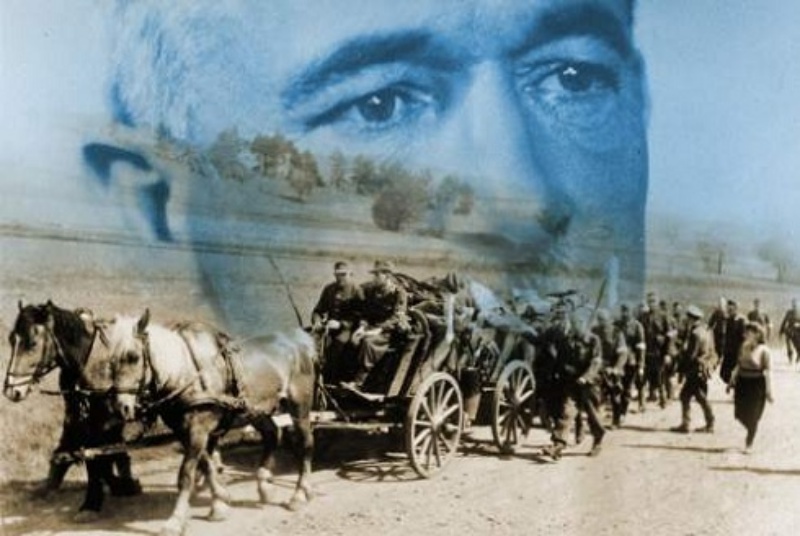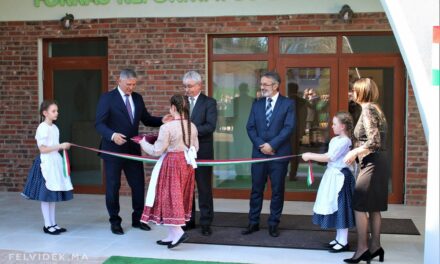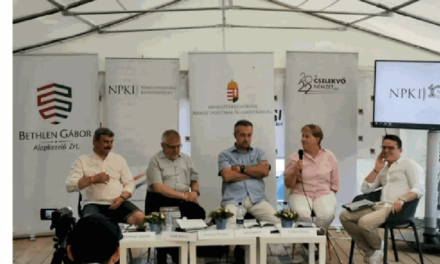On Friday, April 12, on the parliamentary memorial day of the displaced people from the highlands, the bell of the Catholic church in Gúta will ring on Kossuth Rádio as a remembrance and reminder of the Hungarians who were deported due to the Beneš laws, the displacements and deportations in the form of ethnic cleansing. In Czechoslovakia, which was reestablished after the Second World War, the Kassa government program of April 5, 1945 held Hungarians and Germans collectively responsible for the "disintegration" of the country.
On April 12, 1947, the first trains carrying Hungarians sentenced to deportation left for Hungary, writes felvidek.ma . The Czechoslovak government measures aimed at creating a Czecho-Slovak nation-state without minorities also included declaring the Hungarian minority as collective criminals and depriving them of their rights, confiscating the property of Hungarians in Czechoslovakia, and deporting Hungarians to the Czech Republic under the pretext of public work. These decrees finally ended with the forcibly enforced reslovakization in 1949.
Seventy-seven years ago, the primary goal of the measures affecting Hungarians in Slovakia was to break up the Hungarian ethnic block. From November 1946 to the end of February 1947, more than 40 thousand people, entire families, were deported from the southern districts to the Czech Republic.
These historical events strongly determined the personal and community fate of the people in the city of Gúta in the district of Komárom, from where typically the wealthy families were resettled, and the intellectuals, while the poorer families were deported to work in the Czech Republic: a total of 424 families, 1,767 persons, were taken from Gúta to the Czech Republic, who worked for two years as agricultural servants on state farms and large farmers in the Czech Republic for a small wage.
As part of the Hungarian-Czechoslovak population exchange that began in the spring of 1947, 458 families with 2,005 members moved from Gúta by the end of the year, most of them settled in the village of Pitvaros.
Due to the displacement, Gúta completely lost its middle class and intellectuals. About 2,400-2,500 people left the settlement for Hungary in several waves.
In place of the Hungarian population, 456 Slovak families arrived in 16 transports, their total number estimated at 1,900 by local historian Béla Angyal The Slovakian families who moved came primarily from Mezőberény and Medgyesegháza, most of them were farmers, and usually came with little economic equipment and no money. The Czechoslovak state provided them with the farm and housing they needed to live on, and they received significant help from the state for their social assistance and starting their economic life.
As a result of the population change, the ethnic proportions in the settlement have also changed significantly. While until the summer of 1947 the proportion of the Slovak nationality hovered around 1-2%, as a result of the population exchange, this number jumped to 16-19%. At that time, the almost homogeneous Hungarian Catholic village became a mixed population. In 1961, the proportion of Hungarians was 82.2%, since then the number has been continuously decreasing: in 2011, it was 76.7%, and in 2021, the proportion of Hungarians was only 74.1%.
As the historian Árpád Popély put it, "Hungarians who were dragged away because of their nationality, deprived of their property, forced to leave their homeland and deny their nationality are yet to be followed and at least symbolically compensated".
(Erika Szalai/Felvidék.ma), MTI
Photo: velvidek.ma












